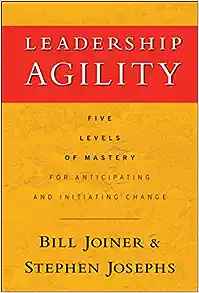DRAGONS AT WORK
A Parable for Our Times
Dragons at Work is a fictionalized leadership case study. It’s the story of Dan Shaeffer, a tightly wound IT executive whose command-and-control style is failing to deliver results. How he is coached to deal with a political enemy, reestablish trust with his team, and become a better leader, father, and husband propels the story forward.
After rejecting other coaches, Dan chooses Michele Wu, whose unorthodox methods guide him through realms he never imagined he would travel.

Now, for the first time, Dragons at Work is available as a paperback or Kindle edition on Amazon. In both editions, you’ll find guest commentaries and developmental resources at the end of chapters. When the story takes a turn that is personally relevant, you can link to instructional material, interviews, and even songs. The Kindle edition makes this particularly convenient. You’re only one tap away from deepening your enjoyment of Dragons at Work.
LEADERSHIP AGILITY
Leadership Agility

I believe it is essential for Leadership Development Professionals to know how the human psyche naturally evolves. Being at one stage of development or another affects a leader’s capacity to lead. As co-authors, Bill Joiner and I presented a map of that development in Leadership Agility (Jossey-Bass 2007).
Using that map as a guide makes coaching very precise. It also gives leaders a roadmap of where they are now and how their development will naturally unfold. This makes for very rapid leadership ddevelopment.
Through our interviews, Bill and I found that half the people at the highest stages practice some method of honing their attention. Because improving attention has such dramatic results in developing leaders, I always offer it as part of my coaching packages.
Quick Informal Assessment
There’s a quick way to get a read on your development. I recommend reading chapters 1 & 2 first. This will help you identify the stage at which you operate now. Read the chapter that pertains to that stage, and then the previous and following chapters.
